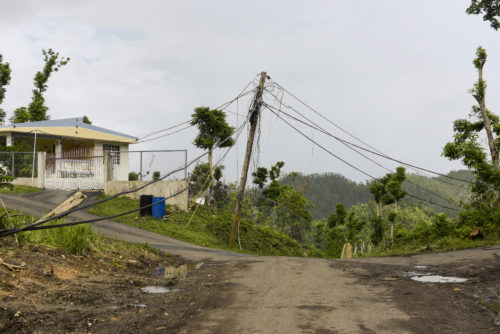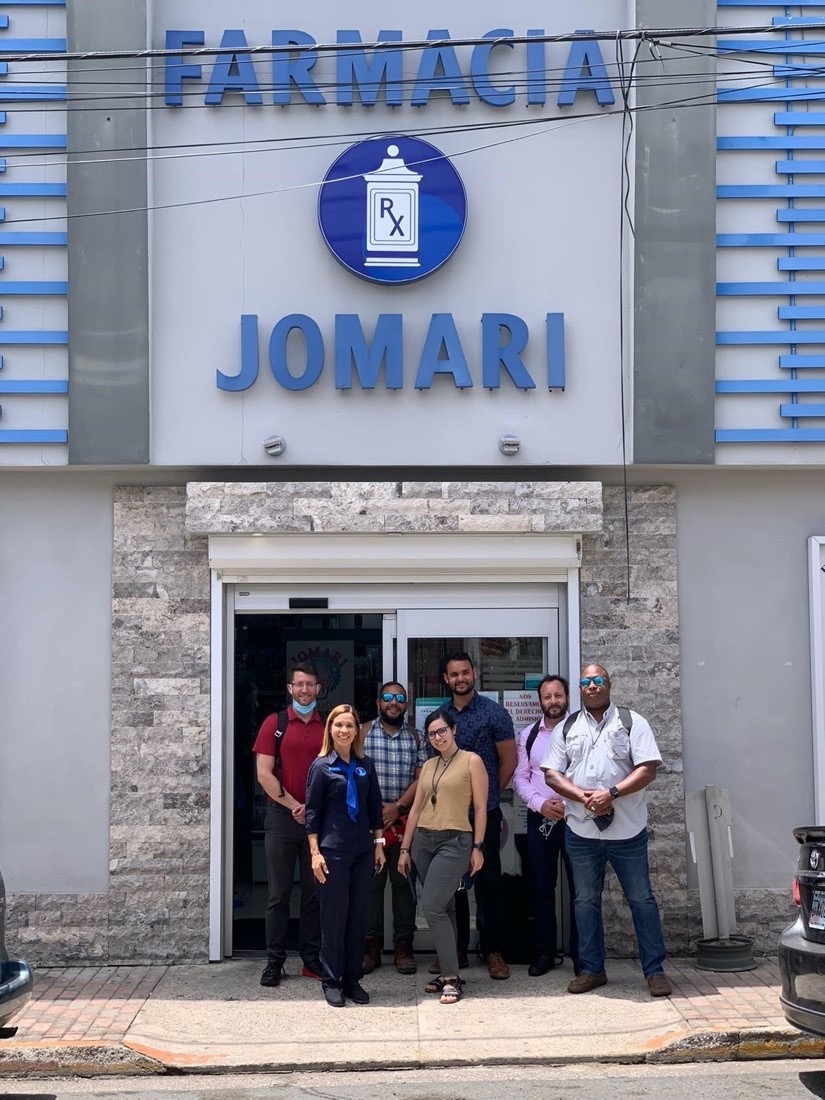
Bringing Reliable, Renewable Energy to the People
Lessons from the Puerto Rico Community Energy Resilience Initiative
Income inequality is palpable on the streets of the United States in cities and towns alike. On one block you may have neighborhoods with maintained roads and sidewalks, well-funded schools, and easy access to services including grocery stores, transit, healthcare, and banks. And on the next block you may have neighborhoods in transit or food deserts with vulnerable key infrastructure including streets, schools, and healthcare.
This checkerboard-like phenomenon becomes ever more apparent after a disaster, as communities with less resources wait, often literally in the dark, while construction crews and vehicles go first to the areas with more.
This was especially visible in Puerto Rico after Hurricane Maria, which struck four years ago on September 20, when communities endured the longest power outage in US history. Public aid for many lower- and middle-income communities was both insufficient and slow. That is why RMI and partners* formed the Puerto Rico Community Energy Resilience Initiative (CERI).
CERI’s goal is to advance access to reliable and renewable energy for critical facilities in low-to-moderate income communities using solar plus storage microgrids. Under a broader definition of critical facility, examples include hospitals and fire stations, local life-sustaining businesses, and non-profits providing essential services following disasters.
The CERI team spent a year working on pilot projects, community engagement, and financing vehicle development. In the end, the team found that a community-driven process combined with flexible capital and technical assistance is the most effective way to help achieve energy resilience for those whose needs are not served in the current market.
The CERI team on site at one of the critical facilities: Farmacia Jomari in rural Puerto Rico. During power outages after Hurricane Maria, the pharmacy provided critical health & financial services to local community members.
Putting All Communities in the Driver’s Seat
CERI puts Puerto Rican communities that received limited aid after disasters in the driver’s seat. The team does this by first listening to community stakeholders and then addressing their energy resilience needs by preparing and de-risking the project. CERI then uses a blend of capital from financial institutions and philanthropic organizations to advance access to reliable and renewable energy.
Currently, the CERI team is installing four pilot projects at critical facilities: two nonprofit organizations and two local businesses, with systems averaging approximately 63 kW of solar and 30 kWh of storage. The pilot projects highlight the importance of community ownership of systems, flexibility in designing a project’s financing, and timing for engaging different stakeholders.
When microgrid projects are locally owned, community members autonomously create their energy goals while simultaneously bolstering local economies and jobs. Facility leaders can determine which equipment and operations must continue during an outage based on their own experiences. This bottom-up involvement shifts accountability from external programs to the community itself.
Flexible Financing Adapts to Community Needs
It is crucial to have financing models that are scalable yet able to flex to individual project constraints. The CERI team will soon launch a financing vehicle which will provide critical facilities throughout the island with concessionary capital and technical assistance needed to simultaneously make systems more affordable and make financing viable.
Operationally, this equates to a lower interest rate and a shorter term on the loan used to pay for the facility’s microgrid. This grant funding contributes to the system’s down payment and to the creation of a loan loss reserve for financial institutions to allow facilities with varying credit histories to access competitive interest rates.
The CERI team’s initial vision was to award a project with an amount of grant funding so that the microgrid’s estimated monthly costs over a 10-year period would be less than the facility’s average monthly energy bill. Monthly costs include loan payments, maintenance, insurance costs, and fixed fees to the utility.
Although some facility staff prioritized the lower monthly energy costs, other facility managers were willing to pay more to reduce their loan term. Such scenarios highlighted the need for the CERI team to work with financial institutions to offer flexibility in the loan’s terms and/or payment options that do not penalize early payments.
Syncing Timelines of Multiple Stakeholders
From a timeline perspective, as the CERI team scales up, the team will ensure to use an inclusive and fair process for project recruitment and selection. This includes engaging with all types of communities (rural and urban, for example) and maintaining transparency with interested facilities.
Once projects are selected, CERI team members will be diligent to engage all the project’s stakeholders early in the project development process and use a competitive process whenever possible to find savings for the participating organizations. Such stakeholders include local financial institutions, local microgrid developers, and critical facility staff. These stakeholders have varying amounts of staff available to focus on a specific microgrid project and differing due diligence and review processes.
For example, financial institutions assess the facility’s financial history, developers build systems based on the facility staff’s requirements, and the facility staff decide whether to take a loan depending on costs and loan terms. If not lined up properly, these timelines translate into time-consuming due diligence processes and rounds of negotiation that can lead to delays in a project.
The Right System for Each Individual Need
Facilities have greatly varying needs differing on the types of electricity services, electricity rates, and on how and when they use energy. Therefore, technical assistance on energy modeling, system sizing, energy efficiency analysis, and procurement support is key to ensure that each facility has the right system and best price for its specific needs.
For example, a therapy and rehabilitation center may use power mainly during weekdays while a supermarket may require a steady energy supply 24 hours a day, seven days a week, 365 days a year. In the event of a prolonged power outage, facilities have very different critical load needs—while some facilities may be able to operate with 25 percent of the usual energy supply, others may require 50 percent or more. Time of use and critical load size have significant implications when designing battery size.
There are also physical constraints that affect project design. Some facilities may have a structurally sound roof that has enough space to accommodate the system, while others may not have enough roof space or may need significant repairs to accommodate a solar system. And some facilities may need ground-mounted systems that increase the system costs (ground mounted systems of this size are often more expensive than roof mounted systems based on the additional construction needed).
In most cases, facility owners and or administrators lack the experience and background needed to know if the system is right for their needs, if the price is appropriate given the market, or if the equipment meets the local requirements. With technical assistance, facilities can get the right system at the right price, and are likely to share their positive experiences with colleagues. This will lead to grassroots scaling of renewable energy in communities in Puerto Rico and beyond.
The Importance of Capacity Building
Maintenance is key to the sustainability of these systems. Building the capacity to check the system, use pre-contracted O&M and warranties, replace parts as needed, and ensure continuous safety and system operation is essential. Through a CERI-specific capacity building plan, facility owners and administrators gain the knowledge required to understand the technical aspects, financials, and overall implications of acquiring and maintaining a solar-plus-storage microgrid.
What’s Next for CERI?
The CERI team is preparing a transition to a next phase of demonstration projects across Puerto Rico. This work will set the stage for the full implementation of a scaled-up financing vehicle where hundreds of facilities will benefit from affordable and resilient solar-plus-storage microgrids.
These microgrids will provide stable energy prices, savings from day one, the ability to continue providing essential services in the event of an emergency, environmental benefits, and ultimately, community resilience and wellness. They will enable all community members to receive critical services such as health care, food, water, and communication when needed most.
If you are interested in learning more, please contact us at CERI@rmi.org.
* CERI was founded by The Rockefeller Foundation; RMI; Fundación Comunitaria de Puerto Rico; The Puerto Rico Science, Technology, and Research Trust; the Association of Renewable Energy Consultants and Contractors for Puerto Rico; and Resilient Power Puerto Rico.
